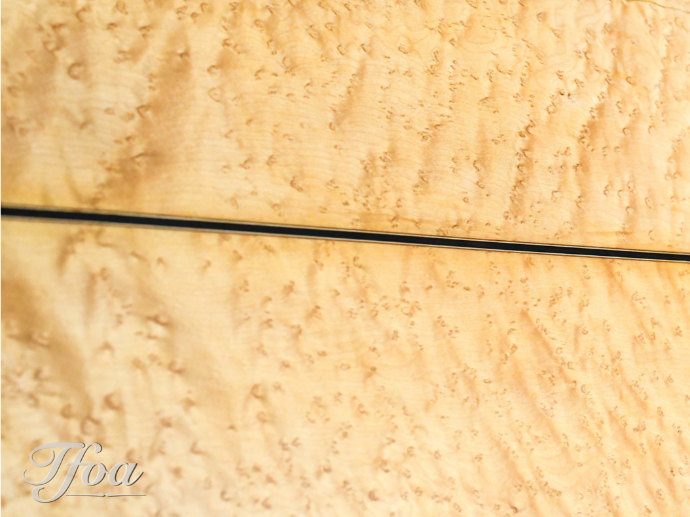Lots of high-end?
In acoustic guitars, maple sounds super transparent and offers more high-end compared to other tonewoods. That's why you often see maple in larger models, as those constructions add more low-end and achieve a perfectly balanced sound. If you enjoy playing chords and are looking for a beautiful full sound for strumming, then a jumbo model with maple is definitely worth a try.
Fortunately, maple is much more than a one-trick pony, so we are seeing this tonewood increasingly used in smaller acoustic models by the world's top guitar builders, with stunning results. Maple is not used in mandolins for nothing, as it adds extra volume and clarity, and violin makers have been turning to maple for centuries. This tonewood can work just fine without a large body. Take a listen to this 12-snarige Collings. It's crystal clear, full, rich, and a fantastic instrument for both the studio and live performances in a band!

Maple is often overlooked, but in many ways it might just be the perfect tonewood for acoustic guitars. Without a doubt it is one of the best looking tonewoods, just take a look at this 'birdseye' maple by Ramirez.

Maple offers guitarists more than backs and sides, because beautiful roasted or baked guitar necks and fretboards are also made with maple.

And what would a Gibson Les Paul be, without a maple top?

And what about the figuring on deze Collings. which is also maple, but with a completely different look.
And if you are looking for a real showstopper, quilted maple might be just the tonewood you are looking for.

If you want to get a good idea of what maple has to offer in an acoustic guitar, just listen to Here comes the sun by The Beatles, because that is the typical sound of a Gibson J200 with glorious maple back and sides. Like good wine maple matures, so the vintage guitars from that time sound even better now.

A joy to play
In this schedule by Taylor you can clearly see what maple has to offer: the emphasis is leaning more towards the higher frequencies and that is something that smart luthiers cleverly use in their construction. In addition, maple offers a nice mix of harmonic overtones that you may know from rosewood and yet it still offers the solid, more 'woody' base tones that you may know from mahogany. As far as sound is concerned, maple is a perfect blend that gives guitarists a unique, direct playing experience, because the wood is very reflective and super sensitive. If you play hard, the guitar gets loud, if you play softly, maple will change color with you. Because of that very direct feel and the clear, almost airy sound, a maple guitar can really feel like an extension of your body.
Want to give maple a try? We have more than 800 guitars in stock acoustic and electric, new, second hand and vintage and there is always something with maple available. So feel free to drop by. The coffee is ready!
Want to know more about other tonewoods? We have written a handy overview.